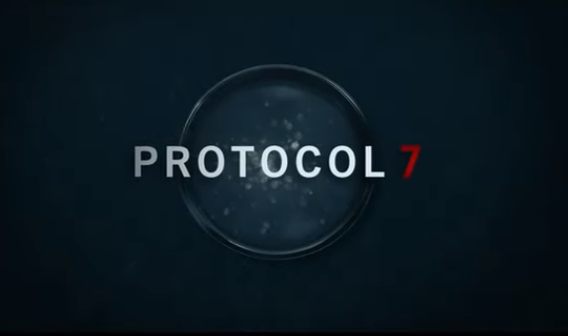The Guardian fabricated, altered and stealthily retracted their Wikileaks-Manafort story to muted criticism from the ‘fake news’ obsessives

On the 27th of November 2018 the Guardian posted a story claiming that former Trump campaign manager Paul Manafort visited Julian Assange in the Ecuadorian embassy in London on three occasions in 2013, 2015 and 2016.
Almost immediately one of the co-authors named Fernando Villavicencio had his name removed from the online article, but still remains on the print copy. In less than four hours they had reworded the article without declaration, adding ‘alleged’ and ‘supposed’ to the central claims. By the end of the day they had quietly disowned the story, and have not promoted nor followed up on any of the claims since.
This is because it’s completely fictitious. It’s textbook ‘fake news’, but of the Anglo-Saxon rather than Slavic variety and therefore useless to the narrative which currently returns the most shares on Facebook and most lucrative ad clicks.
It was co-written by Luke Harding, a man who is currently cashing Amazon cheques for a book on the topic in question and harbours a long-standing personal feud with the subject of the story, clearly disqualifying the Guardian from running it under any definition of responsible journalism. A man named as a co-author in the print version but removed online, Fernando Villavicencio, was previously convicted in Ecuador of forging official documents to sell a story to the Guardian. He is an associate of the US Intelligence Community and played a vital part in the attempted coup of the socialist Rafael Correa, who gave Assange asylum in the Ecuadorian embassy as President. After initially printing his name, the Guardian quickly realised that his reputation would undermine the story and decided to scrub him from the record.
Each detail of the story, from its broader narrative to the specifics, are easily provable and completely unproven. It has been contradicted by both Fidel Narvaez, the former Consul at Ecuador’s London embassy between 2010 and 2018, and Manafort’s passport records that were disclosed in the Mueller investigation.
The Washington Post, themselves hardly unenthusiastic to spill ink over Russian internet stuff, called the story a ‘dud’, and acknowledged the Guardian’s initial ‘half-hearted’ defence of the story which soon evaporated into ignoring the piece altogether (despite being a called ‘BOMBSHELL’, it was absent from their Tweets and Facebook posts after the response was more sceptical than they imagined).
For starters, the article alludes that visitors to the embassy are required to scan their passports, and yet admits that they do not have this data, despite their anonymous source allegedly coming from the inside. But to back it up further, before walking into the embassy Manafort would have walked through a slice of the most surveilled piece of land on the planet, before stepping into a building where $15 million worth of security features were present to keep Assange and his associates under close wraps. All this, and not a single piece of evidence to corroborate this story. Not a picture, nor a blurry CCTV video, nor any word with a security guard.
The story’s claims are based on a document ‘seen by’ the journalists. They couldn’t publish a redacted version of it to protect sources, specify any other details about it, nor even quote its wording. It’s lazily left there like an ’N/A’ scribbled in the column titled ‘evidence’, adding to the article’s overall presupposition that its readers don’t possess critical thinking skills beyond that of a 10-year-old.
This represents the second high-profile attack on Wikileaks by the Guardian in the past year after their similarly flimsy ‘Operation Hotel’ which was once again largely concocted by Villavicencio. The paper benefited greatly off the back of Assange and Snowden’s revelations in the early 2010’s but in recent years have found a more comfortable position taking shots from the other side of the table.
The Guardian and Wikileaks
Does the Guardian honestly have an agenda against Wikileaks as Assange has alleged? Doubtful, their bipolar take on the organisation has followed broader sea change in the Western media landscape. There is no conspiracy here other than self-censorship to produce content that gets the clicks, deliberately or sub-consciously.
The world was a very different place in 2010, and the five filters of the Propaganda Model that Chomsky and Herman outlined in Manufacturing Consent have mutated. The cold-war ‘fear factor’ has replaced its boogeyman from Arabic to Russian; the ownership pool of corporate media outlets has narrowed further due to an expansion of the Murdoch empire; groups that provide ‘flak’ have become noticeably more jingoistic in response to Russian interference in the US election, and new media outlets (including the Guardian’s website/blog) that were once considered subversive have been officialised and creep closer to inside government sources to enhance their credibility but stifle their room for dissent.
Contrary to the general narrative, accusations of Wikileaks being agents of foreign psyops have dogged them from the very start, throughout all 6 of their consecutive nominations for the Nobel Peace Prize from 2010-2015 until they were declared a ‘hostile non-state intelligence service’ by the US Secretary of State last year. More than any tangible change in the organisation, Wikileaks has been subsumed by a strange neo-Cold War that has mesmerised the Western media.
The Guardian doesn’t formulate a public narrative, but certainly responds to it. Because of that, award-winning articles on the Iraq War Logs have been replaced by Luke Harding’s unsourced and low-effort nonsense, and it’s a real shame.



